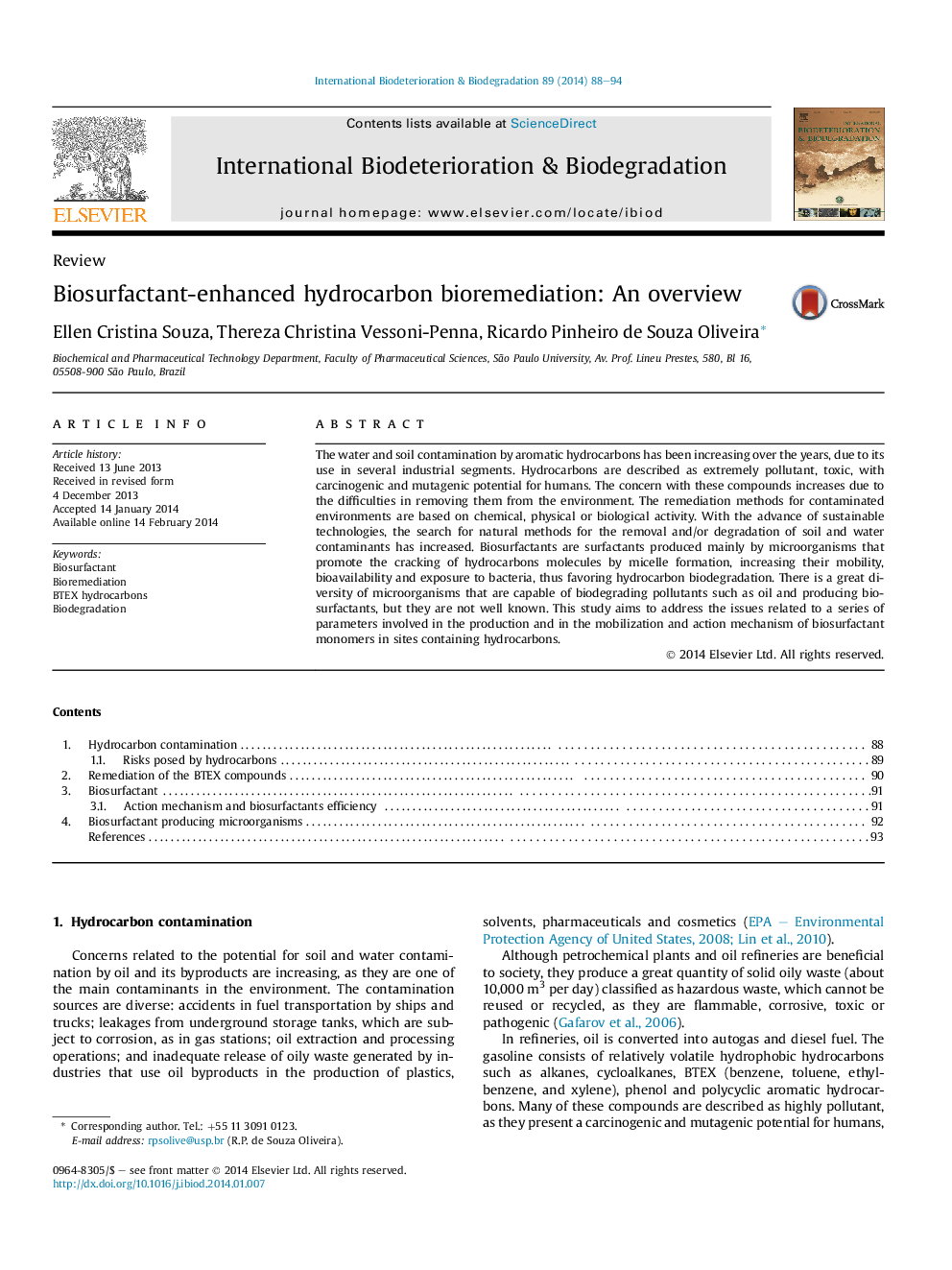| Article ID | Journal | Published Year | Pages | File Type |
|---|---|---|---|---|
| 4364842 | International Biodeterioration & Biodegradation | 2014 | 7 Pages |
•Hydrocarbons are extremely polluting, toxic, potentially carcinogenic and mutagenic to humans.•The methods for remediation of contaminated environments are based on chemical, physical or biological activity.•Biosurfactants promote the breaking of hydrocarbons molecules.•A great diversity of microorganisms are capable of biodegrading pollutants as oil and produce biosurfactants.
The water and soil contamination by aromatic hydrocarbons has been increasing over the years, due to its use in several industrial segments. Hydrocarbons are described as extremely pollutant, toxic, with carcinogenic and mutagenic potential for humans. The concern with these compounds increases due to the difficulties in removing them from the environment. The remediation methods for contaminated environments are based on chemical, physical or biological activity. With the advance of sustainable technologies, the search for natural methods for the removal and/or degradation of soil and water contaminants has increased. Biosurfactants are surfactants produced mainly by microorganisms that promote the cracking of hydrocarbons molecules by micelle formation, increasing their mobility, bioavailability and exposure to bacteria, thus favoring hydrocarbon biodegradation. There is a great diversity of microorganisms that are capable of biodegrading pollutants such as oil and producing biosurfactants, but they are not well known. This study aims to address the issues related to a series of parameters involved in the production and in the mobilization and action mechanism of biosurfactant monomers in sites containing hydrocarbons.
